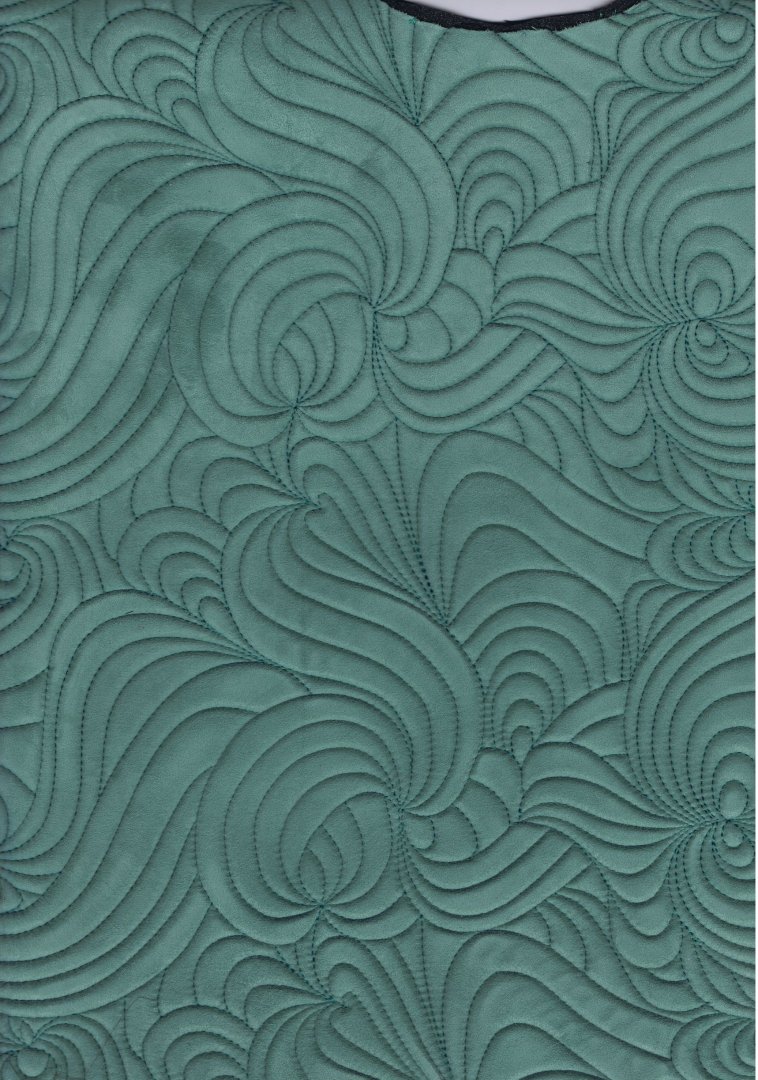Complete guide to matelassé quilted embroidery
What is matelassé quilted embroidery?
Quilted embroidery, also known as matelassé, is a textile decoration technique that creates a quilted effect by inserting padding between two layers of fabric. This method not only adds volume and texture but also serves to insulate, making it ideal for garments, fashion accessories, and furniture elements. Patterns range from floral and geometric designs to custom made-to-order, fitting perfectly for a wide range of applications, including leather goods such as bags, shoes, belts and clothing.

Materials needed for quilted embroidery
To make quality quilted embroidery, careful selection of materials is essential. The base fabric can range from lightweight fabrics to leather, denim, and polyamide, depending on the end use of the product. Filling, usually wadding or foam, is chosen according to the desired density and weight, directly influencing the softness and relief of the embroidery. Specific tools such as quilting needles, strong thread, and possibly a quilting machine are essential for professional results.
Basic quilting embroidery techniques
Making quilted embroidery requires an understanding of basic techniques, which include pattern selection, fabric preparation, and assembly. Beginning with a detailed design helps to accurately plan the distribution of batting and the stitching path. Preparing fabrics by ironing and aligning them ensures a smooth, even surface. The stitching process joins the layers of fabric and padding, following the predefined pattern to create the characteristic quilted effect.
Motifs and designs in quilted embroidery
The choice of motifs and designs in quilting embroidery is crucial to the final result. Geometric designs offer a modern and structured look, ideal for home decor items and fashion accessories. Floral patterns, on the other hand, add a touch of elegance and femininity, perfect for clothing and bedding. Customizing designs according to the customer's taste or current trends can transform a common piece into a unique and valuable item.
Applications of quilted embroidery in fashion and interior design
Quilted embroidery is distinguished by its versatility and ability to add a touch of elegance and comfort to a wide range of products.
In the fashion industry, this technique finds application in numerous leather goods, such as luxury handbags, elegant shoes, refined belts, and soft-touch leather jackets.Each piece reflects a unique blend of functionality and style, with quilted embroidery adding not only aesthetic beauty but also a pleasant tactile feel.
In home decor, quilted embroidery transforms simple fabrics into sophisticated design elements. Bedspreads, pillows, and even sofas and armchairs take on a new dimension with worked surfaces that invite touch and are pleasing to the eye. Quilting adds a level of detail that can complement any interior style, from classic to modern, making it a favorite option for designers and decorators.
Inspirations and trends in matelassé quilted embroidery
The world of quilted matelassé embroidery is constantly evolving, with new trends and inspirations emerging regularly. Designers and artisans often draw from nature, art, and fashion to create innovative designs that push the boundaries of creativity.
Current trends see a return to classic motifs, such as the rhombus pattern, reinvented in a modern key with bright colors and novel textures. Inspiration can also come from observing the works of other artists, craft shows, and design fairs, where the sharing of ideas fuels the continued evolution of this art form.
Conclusion: the art and elegance of quilted embroidery
Quilted matelassé embroidery represents a fusion of tradition and innovation, combining centuries-old techniques with contemporary trends to create unique products that enhance elegance and comfort. Whether embellishing a fashion accessory or adding a touch of warmth and sophistication to home decor, quilted embroidery offers endless creative possibilities.
With the right combination of materials, techniques, and inspiration, beginners and professionals alike can explore the wide range of applications of this fascinating textile art form.